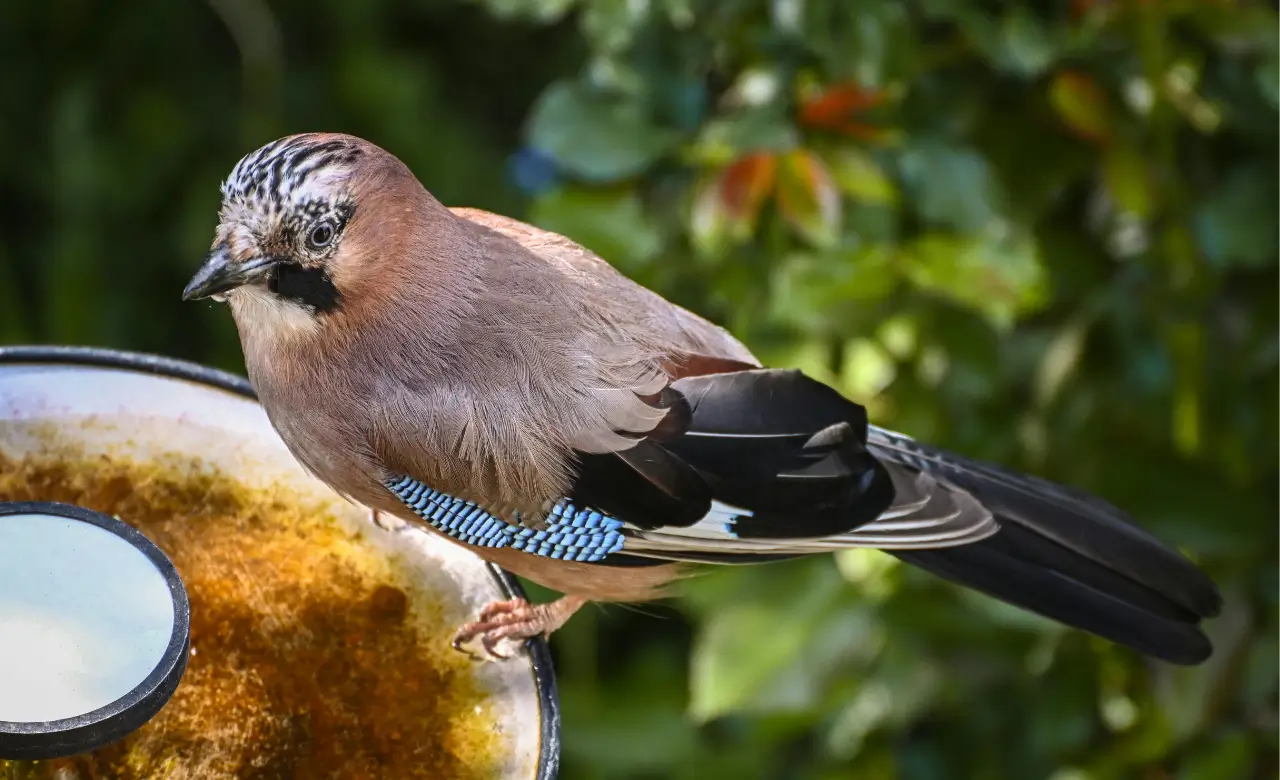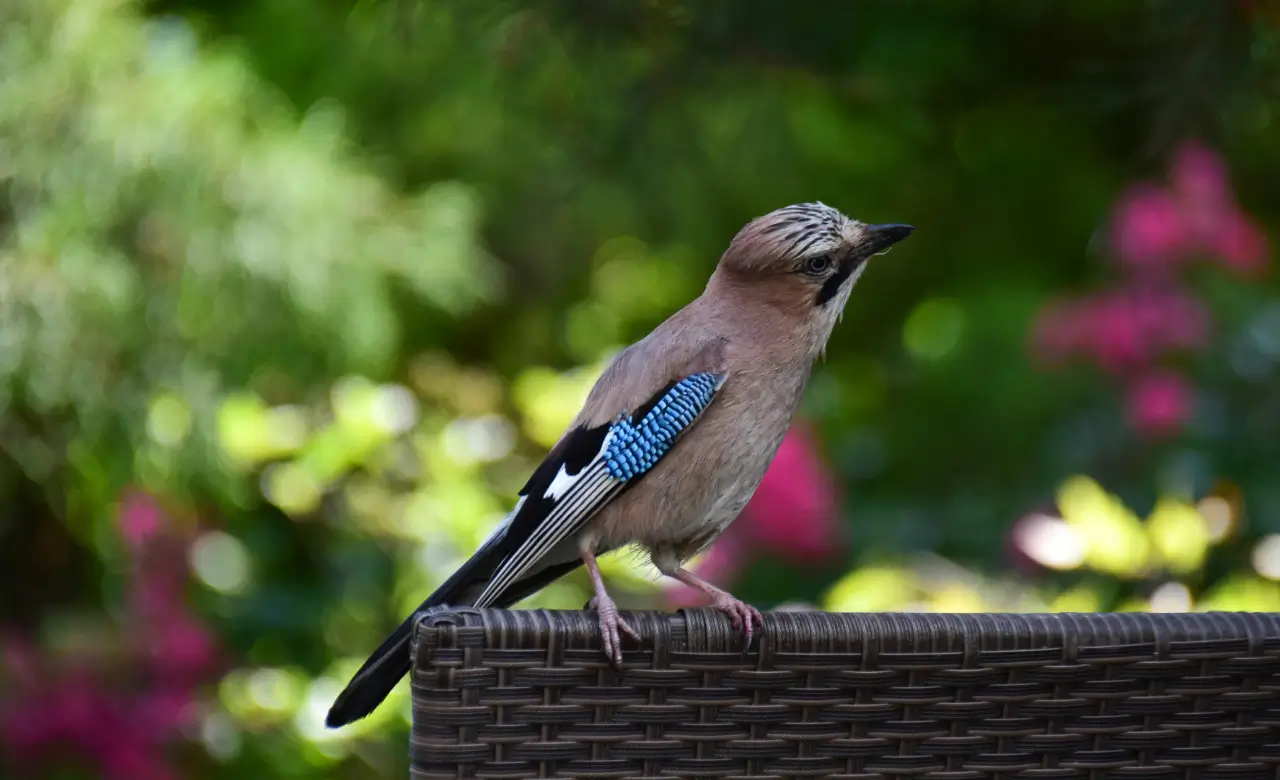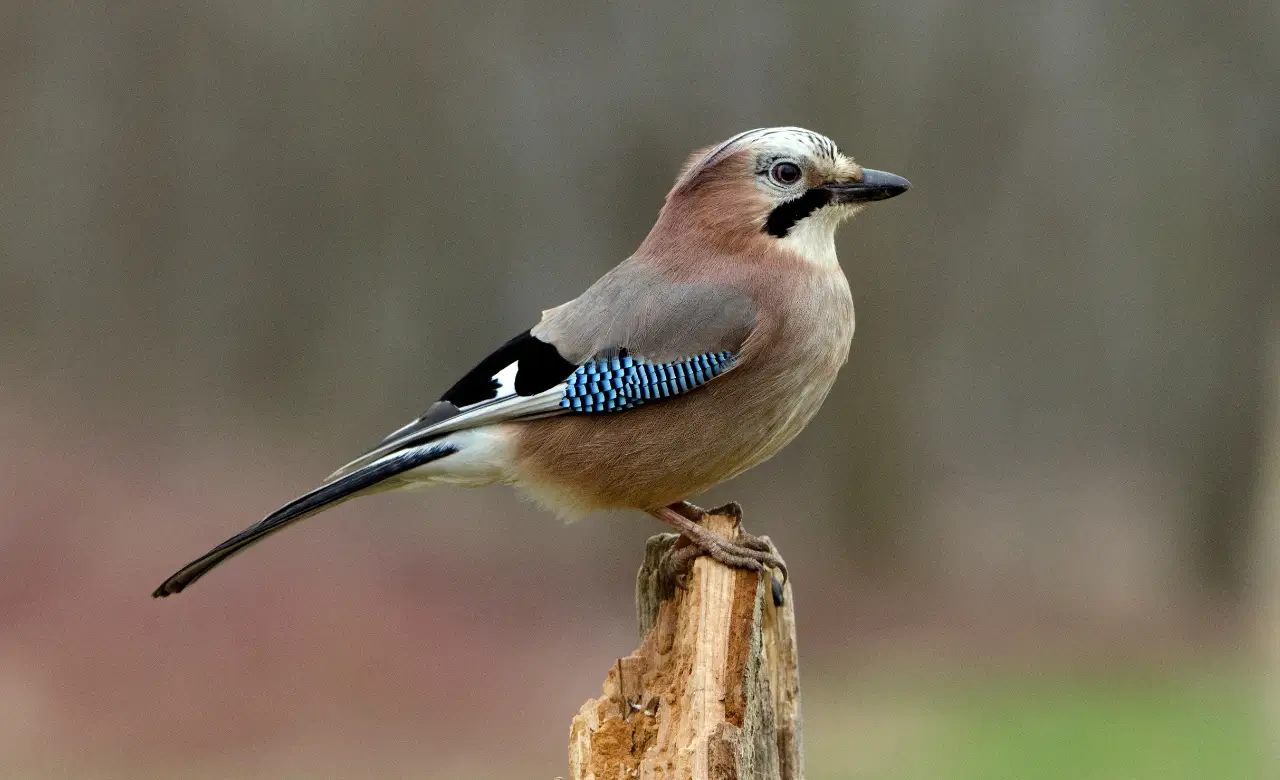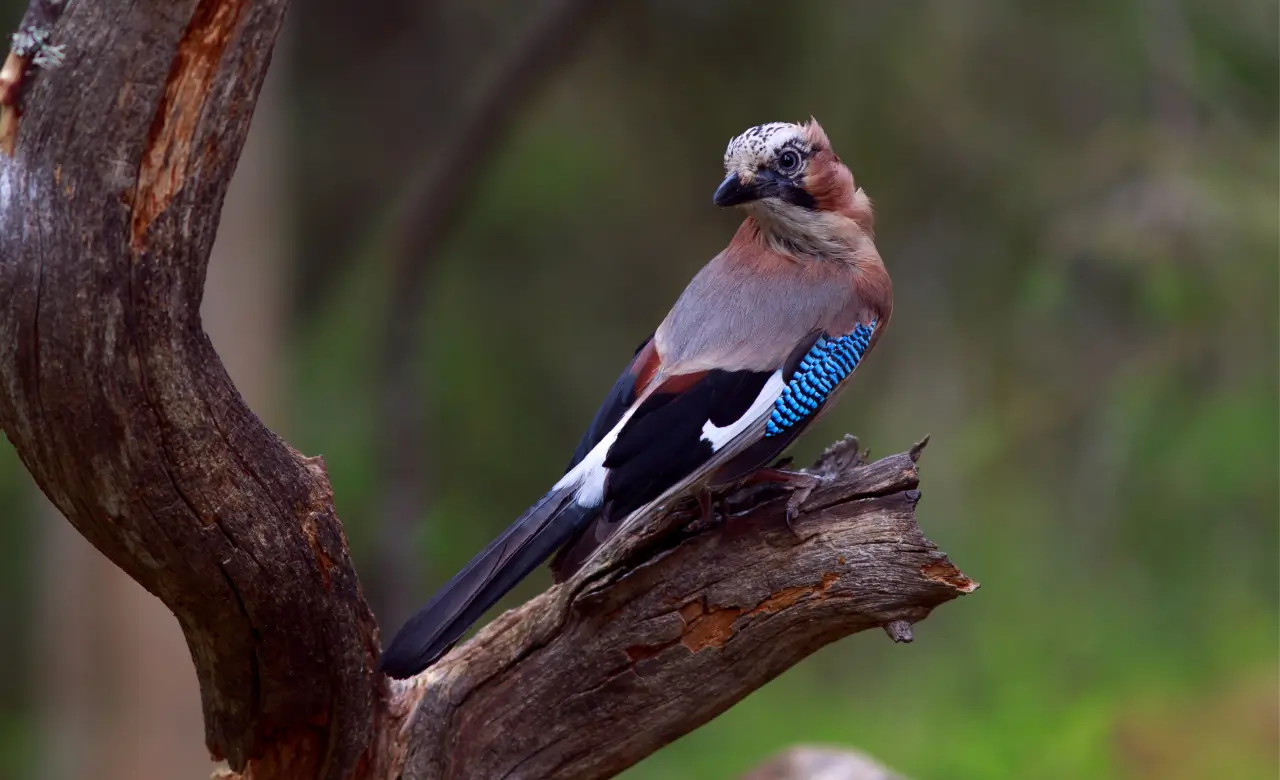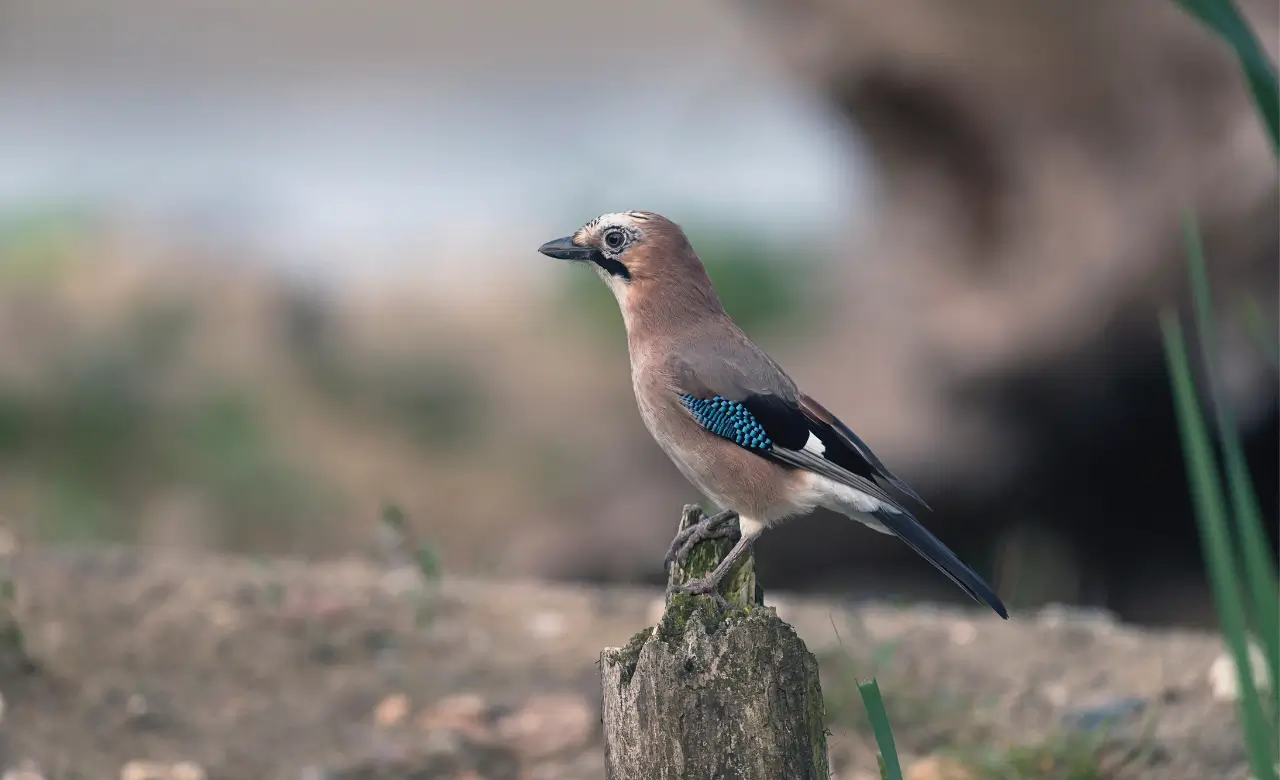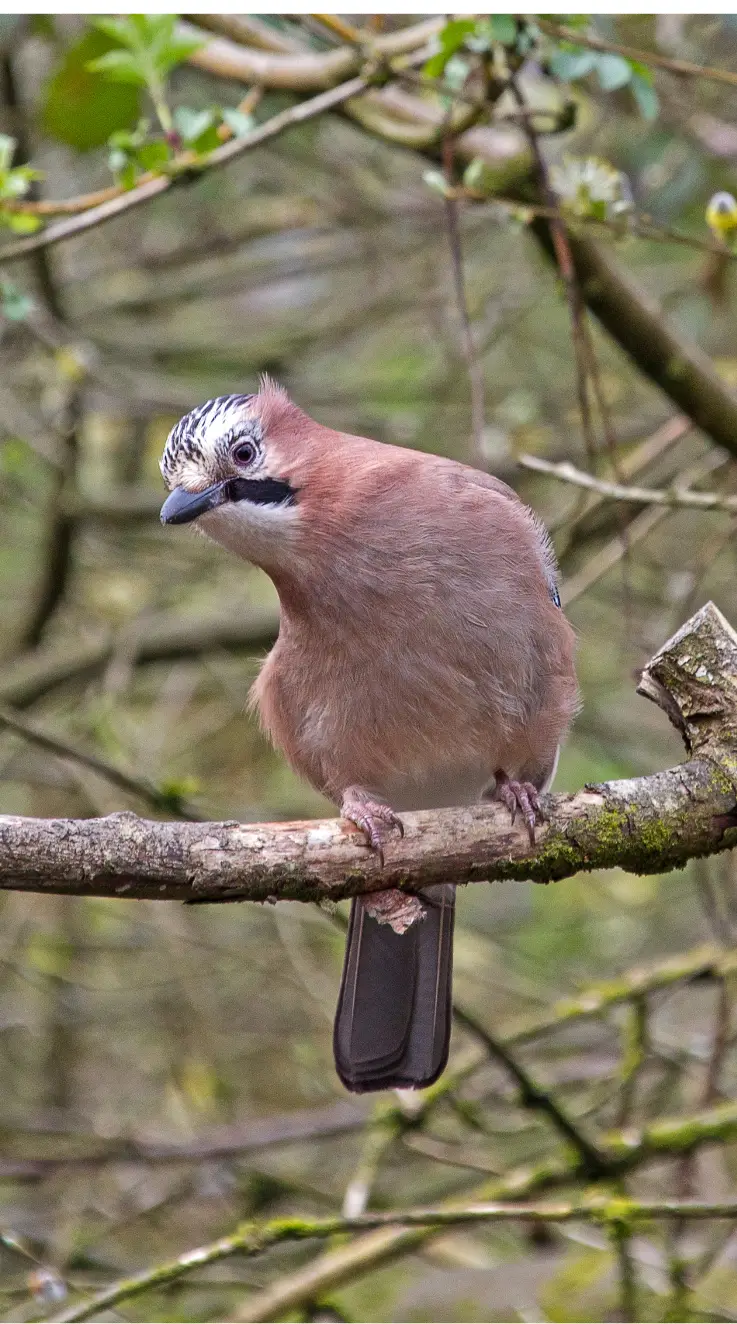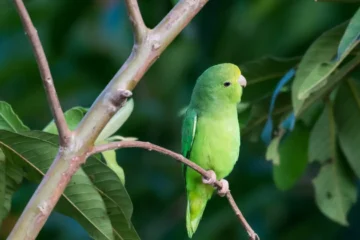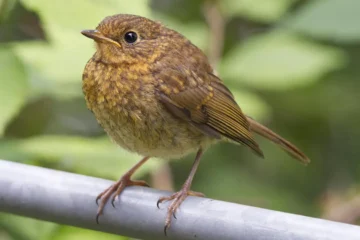The Eurasian jay is a colorful bird with pinkish-brown feathers, bright blue wing patches, and a black mustache-like mark on its face.. This bird is known for hiding acorns which helps oak trees grow by accident.
It can mimic other bird calls and even human sounds. Bird lovers often admire it through photos and videos although it is not seen in the wild.
Images of Eurasian Jay
Price of Eurasian Jay
An Eurasian Jay typically costs between $600 and $1,200, depending on age, health, and breeder reputation. These birds are rare and often sold through exotic bird specialists.
General Characteristics of Eurasian Jay
This inspiring bird is rare in the USA territory but always fascinates bird lovers whenever seen. Here are certain general charcateristics of this bird:
| General Characteristics | Features specific to Eurasian Jay |
| Scientific Name | Garrulus glandarius |
| Size | Medium-sized bird and around 13 inches long |
| Color Pattern | Pinkish-brown body with bright blue wing patches |
| Head Markings | Black mustache stripe with a white throat |
| Voice | Harsh screeches and can mimic other birds or sounds |
| Food Preference | Feeds on acorns, insects, seeds, and small animals |
| Intelligence Level | Known for problem-solving and hiding food |
| Nesting | Builds cup-shaped nests in trees |
| Social Behavior | Usually shy, often seen alone or in pairs |
Lifespan of Eurasian Jay
A Eurasian Jay can live up to 16 years, but most survive around 5–7 years in the wild. They can reach 20 years in captivity with proper care.
Interesting Facts About Eurasian Jay
This bird is a wholesome marvel of nature to be observed and captured with camera. Below are some interesting facts related to Eurasian Jay:
1. Mimic Human Voices
Eurasian Jays are expert mimics. They can expertly copy human voices and even mechanical sounds like car alarms. Some have learned to copy speech patterns in captivity or urban environments.
Their voice memory is surprisingly sharp. This makes them one of the best sound imitators in the wild.
2. Can Plan for the Future

Eurasian Jays can anticipate future needs. Studies show they store food based on what they might want later. This behavior shows advanced thinking which is quite similar to apes.
They even hide food where other jays can’t see. That level of planning is rare in birds.
3. Recognize Themselves in Mirrors
Mirror tests are often used to check self-awareness in animals. Eurasian Jays have passed these tests and this shows that they can recognize themselves. This trait is found in only a few species like dolphins and elephants.
It reflects high intelligence level in these birds. Most birds fail this simple but telling test.
4. Collect and Store Hundreds of Acorns
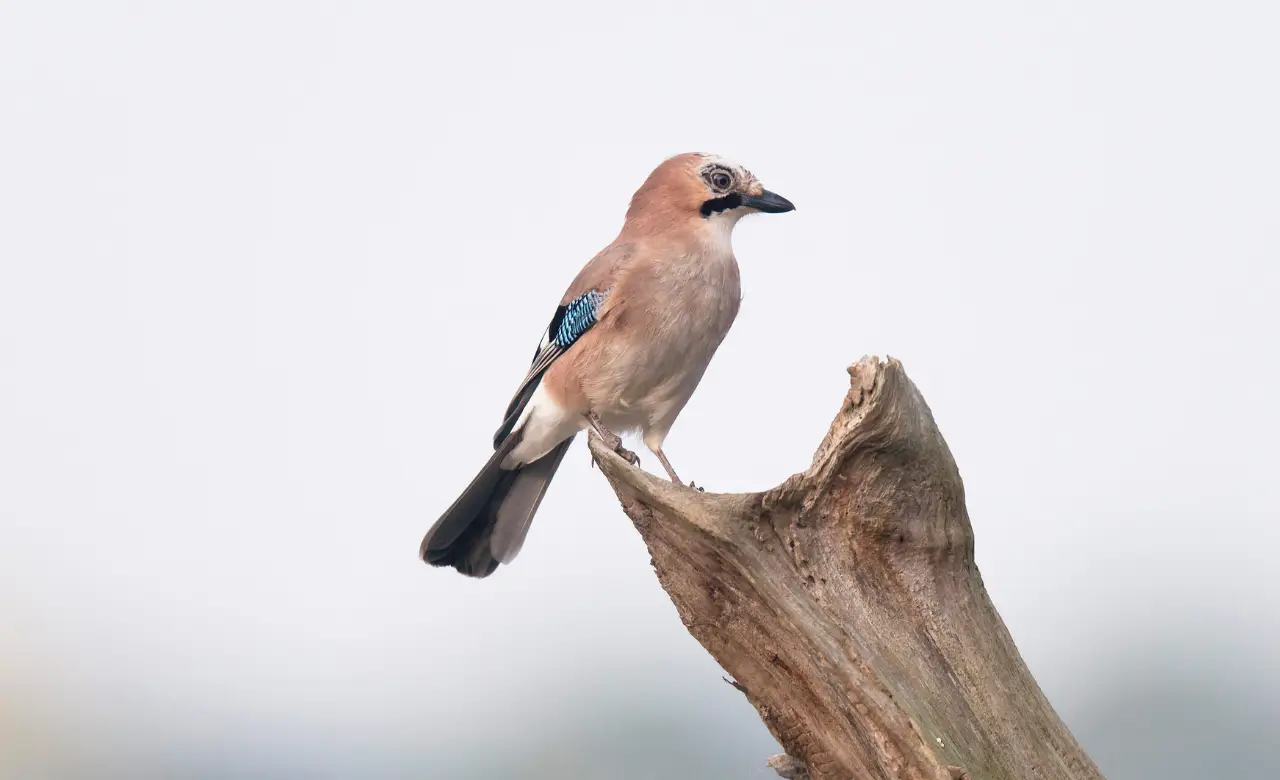
A single Eurasian Jay can bury over 5,000 acorns in a season. They remember the locations using visual landmarks. This behavior helps oak trees spread naturally. Jays could support regeneration in many parks where oaks are planted. Their role in forests is much bigger than it seems.
5. They Can Sense What Other Jays Are Watching
The hiding jay often moves it later when one jay watches another hide food. This shows they understand when they’re being watched. It’s a rare trait called “theory of mind.” Eurasian Jays use it to protect their food from theft.
6. Change Food Choices Based on Their Partner’s Preferences
Males often feed females during courtship. They adjust food availability according to the female partner’s choice. He’ll switch to insects if she’s had too many nuts. This shows dietary empathy.
Few animals show this level of social awareness. It strengthens their bond before nesting begins.
7. Molt in a Secretive Way

Eurasian Jays undergo a full molt once a year but in secret. They stay hidden and quiet during this time. Their flying capability is reduced which makes them easy targets. Jays’ secret molt is a smart way to stay safe when they’re most vulnerable.
8. Blue Wing Patches Are Made of Light
The bright blue on their wings isn’t from color pigments. It’s a trick of light caused by microscopic feather structures. The pattern reflects light in a way that looks blue.
This phenomena is called structural coloration. If the feathers get crushed then the color can vanish entirely.
9. Use Tools to Reach Food
Eurasian Jays have been seen using sticks to reach food in tight spots. Tool use is uncommon in birds outside of crows and parrots. They’ve solved puzzles using objects during controlled studies.
Their problem-solving skills match some primates. This makes them part of an elite bird group.
10. React Differently to Being Watched While Hiding Food

Jays adjust how and where they hide food when another jay is watching. They hide food in noiseless soil or behind barriers if the observer is a known thief. This level of awareness shows deep cognitive flexibility.
11. Fake Burying Food to Trick Thieves
Some Eurasian Jays pretend to bury food when they think they’re being watched. They go through the motions without actually placing the item. This false caching fools other birds.
It’s a clever way to protect their real stash. Few animals have shown this level of deception.
12. Remember the Hidden Food
They remember which type and where they stored the food. This helps them decide what to recover based on freshness like the insects rot faster than nuts. This reflects flexible memory use which is rare among non-human animals.
13. Regional Dialects in Their Calls
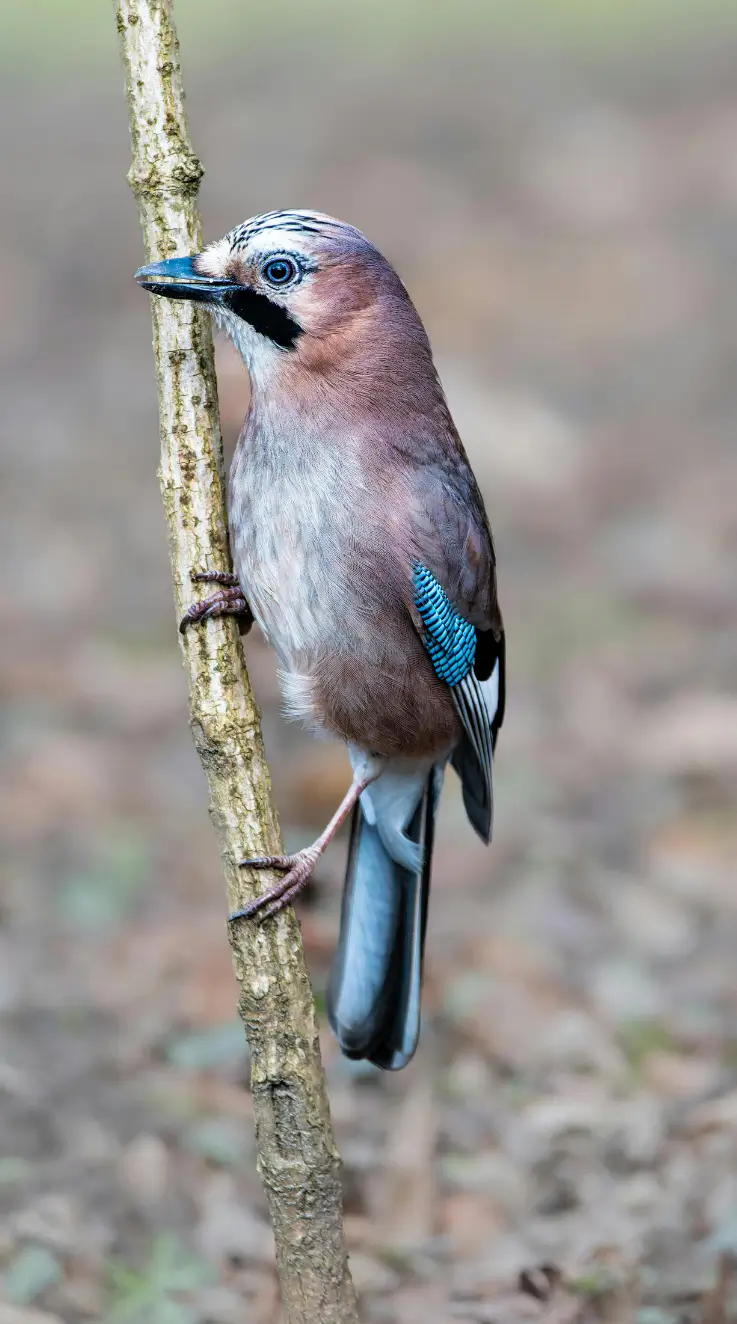
Eurasian Jays from different areas sound different. Their calls vary slightly depending on where they live. This is quite similar to the human accents variations at different places.
Even captive jays raised in new regions adapt to the local call patterns. Such bird dialects are most often noted in sparrows and chickadees.
14. Follow Humans to Find Food
Eurasian Jays watch people to find food. If someone digs soil or opens a bag then they can quickly interpret this as the presence of food. This behavior shows opportunistic learning.
These type of traits are seen in Blue Jays and crows. The Eurasian Jay adapts fast to human presence.
15. Occasionally Eat Wasps
Eurasian Jays eat a variety of insects, including wasps. They remove the stinger to avoid injury before eating them. This behavior is rare among jays. It adds to their reputation as clever and adaptable feeders.
Sightseeing of Eurasian Jays
These birds are not very commonly found in different parts of USA but are seen in some places. Here are certain places at which you can see these amazing birds:
| Location | State in Which it is Located |
| Seattle | Washington |
| Los Angeles | California |
| Miami | Florida |
| New York City | New York |
| Anchorage | Alaska |
How to Get Good Clicks of Eurasian Jay
This bird deserves to be captured using high quality cameras and a good photography. Here are certain facts related to the photography tips of this bird:
-
Use a telephoto lens to capture the Eurasian Jay from a distance without scaring it away.
-
Look for oak trees in parks or woodlands, as jays often forage for acorns there.
-
Shoot early in the morning when the bird is most active and the light is soft.
-
Stay quiet and still; sudden movement or noise will make the jay fly off quickly.
FAQs
1. Can you find Eurasian Jays in the United States?
No, Eurasian Jays are native to Europe and parts of Asia. They don’t live in the wild in the USA.
2. What does a Eurasian Jay look like?
It has pinkish-brown feathers, bright blue wing patches, and a black-and-white face pattern.
3. What do Eurasian Jays eat?
They mainly eat acorns, insects, small animals, and sometimes bird eggs or young birds.
4. Eurasian jay vs Blue jay?
Eurasian Jays have brown feathers with bright blue patches on their wings, while Blue Jays are mostly blue with white and black markings and a loud call.
Eurasian Jays eat acorns, insects, and small animals, while Blue Jays like nuts, seeds, and often visit backyard feeders.
If you need more details about Blue Jays, click here to see more.
5. Why are Eurasian Jays known for hiding acorns?
They store acorns in the ground for winter and remember hundreds of hiding spots, helping oak trees spread.

